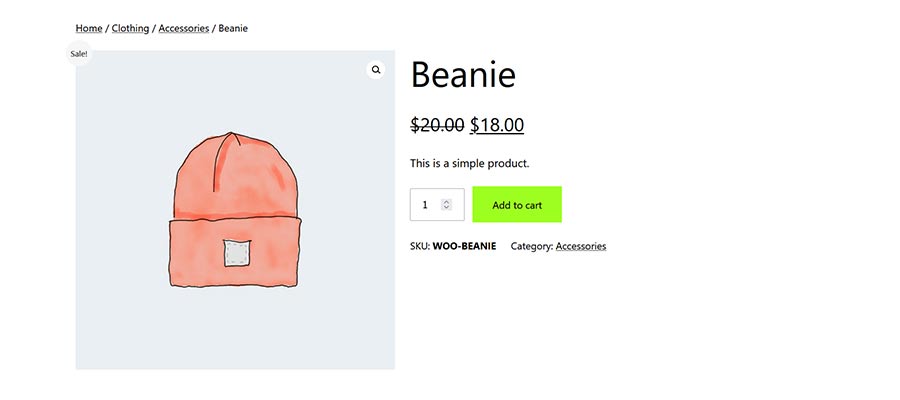WooCommerce is the most popular eCommerce solution for WordPress. The free plugin boasts over five million installations. It’s versatile and can be used to sell both physical and virtual goods.
The plugin follows the WordPress tradition of being extensible. It’s possible to change the look and functionality of the shopping cart. Plus, there’s a massive number of available extensions.
There are pros and cons to this, though. It’s great that you can make WooCommerce your own. But customization comes with risks.
So, how far should you go? Here are some tips for customizing WooCommerce. Along the way, we’ll explore the potential downsides of doing so.
Different Ways to Create a Custom Experience
First, let’s review the different options for customizing WooCommerce. There are three separate approaches, each with their pros and cons.
Think about the future before choosing a method. Be sure that you’ll be able to maintain any customizations you make. Otherwise, things can get messy down the road.
Overwrite the Plugin’s CSS
Style tweaks can be made by overwriting the plugin’s CSS. You can identify specific CSS classes by using your browser’s developer tools. Then, it’s a matter of changing the relevant styles and placing them in your theme.
This method works well for minor changes. For example, changing the color of the “Add to Cart” button.
Want to take things further? You can also disable the default stylesheet. This method is for those who want to rewrite styles from the ground up.
WooCommerce does change its CSS occasionally. Thus, you’ll want to keep up with any changes. You may need to adjust your custom styles accordingly.
Use Hooks & Filters to Modify WooCommerce’s Behavior
WooCommerce includes plenty of hooks and filters for developers. They allow you to modify the plugin output and add custom functions.
Hooks offer several possibilities. You could use them to make small tweaks. Or you might leverage them to create a fully-functioning extension.
This method is also easier to maintain. Updates to WooCommerce don’t impact hooks as often. And you can place code in a custom plugin to keep it organized.
Override the Plugin Templates
There are occasions when overriding a WooCommerce template is unavoidable. The plugin includes templates for every part of the front-end display. And they’re logically organized. It gives you fine-grain control over the process.
But it should probably be a last resort. WooCommerce updates templates frequently. As such, you’ll need to stay on top of changes.
The plugin will warn you if a template is outdated. In this case, you’ll have to grab a fresh copy and make the necessary changes.

Making Smart Woocommerce Design Decisions
Yes, it’s possible to rip apart the look of WooCommerce. But should you? That may be a more difficult decision than you think.
It may not be to everyone’s taste. But there’s nothing inherently wrong with the way WooCommerce looks. And its popularity has benefits.
Users may be familiar with Woo’s established design patterns. That could make the shopping experience more intuitive. There’s some risk in disrupting that flow.
With that, changes to colors, typography, and branding make sense. You’ll have a shopping cart that matches your aesthetic. And you’ll continue to provide customers with a time-tested UX.
It’s possible to create a custom look that maintains Woo’s strength. And it doesn’t have to look like a default installation.
Radical changes can still be a success. But starting from scratch should be carefully considered.

Adding Custom Functionality to Your Cart
There are a myriad of ways to add custom functionality to WooCommerce. An industrious developer can build an extension. Or you can choose from the array of free and commercial products.
This capability is what makes WooCommerce so powerful. It can sell pretty much anything. Expanding its functionality can be done with a few clicks.
It’s worth keeping a few things in mind, though. First and foremost, WooCommerce extensions are WordPress plugins. And they come with the same potential risks.
If a WooCommerce extension is essential to your store, choose wisely. Look for a plugin that is well-maintained and supported. The wrong choice could cost you dearly.
Also, think about why you want a particular extension. Does it provide key functionality? Will it improve the user experience?
Move on if you can’t answer “yes” to either of these questions. No one benefits from more technical debt.

Always Look to the Future
If you take one thing away from this article, let it be this: Keep the future in mind when customizing WooCommerce.
Everyone wants to have a successful online store. It starts with building a website that is stable and secure. From there, it’s about optimizing the user experience.
Therefore, any customizations should fit this mold. And not all tweaks are of equal value. Just because WooCommerce is extensible doesn’t mean you have to max out on changes.
You’ll also need a plan for any additions you make. They all require some level of maintenance. It should be a factor in your decision-making.
WooCommerce is every bit as flexible as WordPress. Make sure that you’re using it to your benefit!




